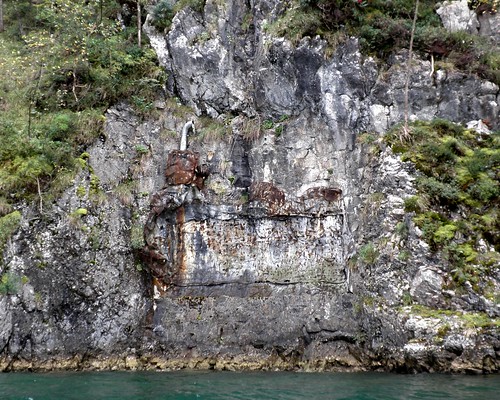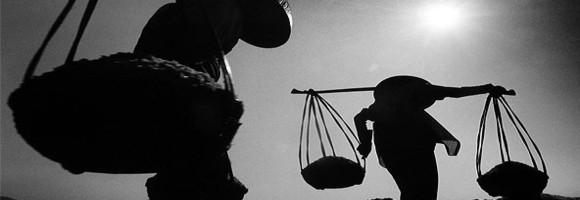About a year ago, I had to leave my old one behind to move to a new job and a new school. This was really a shame, because I had a group of players who seemed to really 'get it' and they clicked pretty well together. We were having great times. Alas. Yes, I know I could have tried to keep it up with something through Roll20 or G+, but even if that had been successful, I'd have sorely missed the face-to-face element. Those guys were just fun to hang out with.
It's time to start another. Last time, I plopped down B2 and used it as the core, planning to expand later. It's a good solution, but this time i want to try making something original. I still want large portions of the world to be decided via co-creation with the players, both because that's easier for me and it's a lot more fun, but I want to start with some specific ideas.
I think I'll be starting with a tentpole dungeon; one that will perhaps turn into a megadungeon, but I don't plan on that initially. I'll also add a large swath of wilderness for later hex-crawling.
I'm conflicted about some of my possible plans, though. For example, I'm fond of the idea of severely reducing the variation of goblinoids (who needs goblins, orcs, hobgoblins, and bugbears? just replace them all with norkers and bandits), but at the same time I want to have room to plop down existing modules if they strike my fancy, because who doesn't want the Caverns of Thracia hanging out somewhere in their game world?
At the moment, I'm fond of the idea of a wilderness with a large main river running into a map-defining bay, forming a delta and a saltmarsh. Hopefully I can advise you to stay tuned to this space for further developments.
And now for the price of admission.
During WW2, the Swiss government undertook a massive military project to hollow out the Alps for use as military bases and population centers in case of German attack. They also mined all the roads and passes, and wired all their bridges and many of the mountain-sides to collapse. The plan was to sacrifice the main valley - which could not be held against the superior war machines of either the Axis or the Allies - but to make taking each new mountain, and each new valley after it, into a living hell for which the Stalingrad campaign is but a pale comparison. After the end of the war, the project continued, fortifying Switzerland against the possible outcomes of the Cold War, even to the point of proofing these bunkers against the use of tactical nukes.
In effect, the entirety of the Alps is a string of dungeons.
 |
| Entrance to a real-life dungeon. I think this is an aircraft hangar. |
In true Swiss fashion, many of these have since been turned into cheese caves, for the maturation of Gruyère-type cheese. While it seems less cool, this is actually a good thing for us, since it means you're much more likely to get a look inside.
 |
| You are at the head of a set of stairs that descend steeply into the darkness. You cannot see the bottom. |
| The 5' corridor continues another 60 feet before coming to an apparent dead end.Do you search for secret doors? |
Many of them also include suspended footpaths between mountains, so cleverly concealed from above that you can't find them even if you know where you're looking. It only takes a little imagination to turn the whole of the Swiss Alps into a megadungeon, waiting to be explored. Especially if, in some alternate historical future, "the Swiss delved too greedily, and too deep."
For those who are interested, plenty more pictures of old Swiss military mountain caves can be found here: Fortifications Suisses




